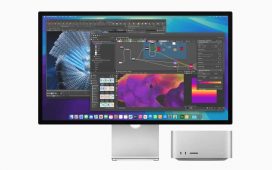
IBM: IBM Security MaaS360 is a cloud-based UEM platform that enables organizations to secure smartphones, tablets, laptops, desktops, wearables, and IoT devices. AI and predictive analytics provide alerts to potential endpoint threats and remediation to avoid security breaches and disruptions. MaaS360 protects apps, content, and data. The platform supports Windows, macOS, ChromeOS, Linux, Android, iOS, and other operating systems.
Ivanti: Ivanti Unified Endpoint Manager is designed to simplify enterprise mobility, applying policies and personalization across all devices. Companies can use the system’s artificial intelligence to determine which users and devices get what type of access. The platform supports Windows, macOS, ChromeOS, Linux, iOS, Android and several other operating systems. Administrators can gather detailed device data, automate software and operating system deployments, personalize workspace environments, and address user issues.
ManageEngine: ManageEngine Desktop Central, a UEM platform from the IT management division of Zoho Corp., helps organizations manage servers, laptops, desktops, smartphones, and tablets from a central location. Enterprises can automate endpoint management routines such as installing patches, deploying software, and imaging and deploying operating systems. The platform also provides management of IT assets and software licenses, remote desktop control, and software usage monitoring. It supports Windows, macOS, Linux, ChromeOS, Android, and iOS, among other operating systems.
Matrix42: Matrix42 Unified Endpoint Management supports Windows, macOS, ChromeOS, Android, iOS, and iPadOS and can be accessed from the cloud, on-premises, or in a hybrid environment. The platform provides automatic deployment of devices and applications, real-time reports and analysis on usage, and access control for applications and sensitive data. Data is encrypted on mobile devices, and personal and business data are separated on BYOD devices.
Microsoft: Microsoft Intune, a cloud-native management tool for Windows, macOS, Linux, iOS, and Android devices, also includes Microsoft Configuration Manager for on-premises endpoints. Enterprises can configure specific policies to control applications, such as preventing emails from being sent to people outside the organization. On personal devices, Intune helps make sure an organization’s data stays protected and can isolate organization data from personal data.
Sophos: Sophos Mobile supports the management of Windows, macOS, iOS, and Android devices, providing configuration and policies, inventory and asset management, and detailed reporting on device usage. Organizations can install, remove, and view apps; use containers to manage content; provide compliance rules and remediation; and protect against threats such as malware and phishing.
SOTI: The SOTI ONE Platform allows companies to securely manage any device or endpoint, including IoT devices, with any form factor throughout its entire lifecycle. Supported OSes include Windows, macOS, Linux, Android, iOS, iPadOS, Zebra, and more. The platform features SOTI XSight, a diagnostic help desk tool that lets technicians analyze, troubleshoot, and resolve mobile device and app issues from anywhere at any time.
VMware: VMware Workspace ONE is a cloud-based platform for managing desktop, mobile, rugged, wearable, and IoT devices. It supports operating environments including Android, iOS, Windows, macOS, ChromeOS, and Linux. The platform offers data protection against security threats with conditional access and compliance policies, with a Privacy Guard feature designed to manage privacy policies. Among the first UEM vendors to offer genAI-powered scripting capabilities, VMware was purchased by Broadcom in 2023, with a sale now pending to investment firm KKR.
This article was initially published in October 2021 and updated in April 2024.












